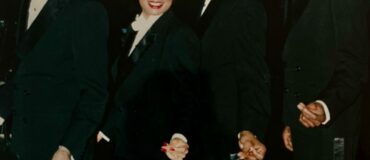By Benja Thompson
Benja Thompson is a 2024 Archiving and Preservation Fellow with LEIMAY. Read more about the Fellowships here. This is the second of Benja’s blog. Read the first part here.
An Adaptable, Accessible Vessel
Inherent to LEIMAY’s process is a sense of flux and eternal becoming, where a prototype for a kinetic sculpture may become a costume for a dance performance. By interweaving artistic concepts and threads through decades of work, LEIMAY’s individual art-objects speak to each other in a symphony of thought and expressive movements. Consequently, the LEIMAY archive grew into an immense garden of cross-pollinated flowers. However, as projects morph into each other and lines blur between development phases, the roots can gnarl and become detached from the canopy above.
In the case of my work with the archive, I quickly encountered a discrepancy between the proposed taxonomy, or categorization system, and its present implementation across the digital collection. Inconsistent naming conventions represented a possible existential challenge for the LEIMAY archive. The very power of creative processes which emerge from metamorphic transformation could be a weakness for an archive, which are typically built around classification and codification, and ultimately reliant on a finalized form. One of the early conversations I had with co-directors Ximena Garnica and Shige Moriya was about creating an archive that does not strive for fossilization, but rather is an adaptable vessel that can move and resonate along with their practice. Ideally, the archive will act as a rich soil where new works can take root and flourish, while still forming an accessible archeology for anyone to experience and understand LEIMAY’s ecosystem.

Extinction Rituals. Date of Completion: December 5, 2023. Materials: Live performance on digital film.
To address these considerations, we expanded the archive’s scope and categorical flexibility in a way that can encompass the various activities of the company. Our schema centers on the three major spheres of LEIMAY: Imagine, Weave, and Embody. “Imagine” covers the artistic LEIMAY works, “Weave” covers community programs such as solidarity funds, and “Embody” covers the education of LEIMAY’s dance technique. Using these spheres, we were able to structure a hierarchy that can lead a user to new connections and related projects without getting lost in the weeds. For example, the project Extinction Rituals consisted of a dance opera and a video installation, in addition to a series of community-based programs in Colombia. Many of these activities were accompanied by educational dance classes. Each of these events are equal parts of the Extinction Rituals process, and the effort in its totality represents the complete art piece.
Previously, the archival organization was split primarily on the basis of time and place, leaving little distinction between performances, classes, or other activities. Now, through the robust naming conventions and taxonomy schema, the factual details of an object can be quickly identified and understood from the name alone, while still encouraging continuity and connectivity in understanding the many elements of a work. While not every project initially incorporates artwork, programs, and education, this structure also allows for the potential case that an “old” project finds another life.

Frantic Beauty. Date of Completion: September 14-17, 2017. Materials: Live performance and media installation on digital film
The desire for a dancing archive extends beyond the internal machinations of LEIMAY, as the developing public archive is intended for a similar experience of spontaneous serendipity. An aspect of the public archive’s usability centers on organizing records by multiple filters or criteria. A favorite filter-set we developed is “Materials.” With this filter, a user can find all of the LEIMAY works that incorporate a specific material, such as sand, strings, water, or light. This way, a single search can return records separated by decades and countries, but united by a shared texture. By collapsing time and space to reveal artistic patterns, motifs, and thematic development, the public archive itself can become a generative artwork.
All photos courtesy of LEIMAY
Header Image: “Kinetic Resonances.” Date of Completion: August 13, 2023. Materials: Live performance on digital film. Additional Information: Kinetic Resonances is an immersive sculptural installation and a durational dance performance consisting of a series of kinetic string-sculptures powered by performers’ bodies. The work allows for multiple interplays between the environment, the materials of the body, and the sculpture. It explores the relationship between space, materials, and bodies and how each is affected by the other revealing the physics of causality and potentials for interconnectivity.

Benja Thompson is currently pursuing a masters degree in Library & Information Sciences at San Jose State University. They received their BAs in History of Art & Visual Culture and Film & Digital Media at University of Santa Cruz, California.
As a practicing queer archivist, Benja works to uncover obscured truths and bring untold stories to light. With the Mill Valley Public Library, they established the first queer archive of Marin County, which couples oral history interviews with current community members alongside materials stretching back one hundred years. They also train on analog film preservation with Other Cinema and Canyon Cinema. With the LEIMAY Archive, they are very excited to help share audiovisual material from this unique dance studio’s fascinating artistic practice, and intend to develop understandings of ‘the archive’ beyond a passive repository into an active vessel.
Photo credit: Cam Archer
____
We accept submissions on topics relevant to the field: advocacy, artistic issues, arts policy, community building, development, employment, engagement, touring, and other topics that deal with the business of dance. We cannot publish criticism, single-company season announcements, and single-company or single artist profiles. Additionally, we welcome feedback on articles. If you have a topic that you would like to see addressed or feedback, please contact communications@danceusa.org.
Disclaimer: Opinions expressed in guest posts do not necessarily represent the viewpoints of Dance/USA.






